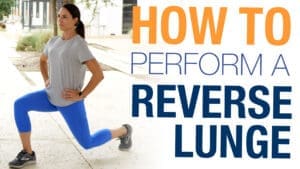Jumper’s knee, or patellar tendonitis, is the bane of runners and athletes everywhere. It appears gradually at first, only showing up during exercise as a minor ache just below the kneecap. However, as time goes on, jumper’s knee can become more aggravated with repetitive stress, leading to reduced mobility and activity.
If ignored, patellar tendonitis can lead to more serious injury to the tendon, and possibly even cause a tear. It is critical you seek treatment sooner rather than later, as the pain can increase and hinder your everyday life.
At Airrosti, we take the time needed to review your symptoms, identify the true cause of your pain, and work with you to develop a treatment plan that can help you recover faster. We even provide tools and resources you can use to help address problems on your own. Schedule your appointment with an Airrosti provider today to get started!
Understanding Patellar Tendonitis
Patellar tendonitis is a common overuse injury that affects the tendon connecting the kneecap to the shinbone. Unlike many other knee injuries like fractures and tears, this condition develops over time as the tendon is worn down from repetitive stress.
One of the most common signs of patellar tendonitis is pain directly under the kneecap. Depending on the severity, this pain can either be too mild to notice outside of intense activities like running, or severe enough to limit your daily activities. Because this condition tends to appear gradually, many people suffering from patellar tendonitis may initially think the pain will go away if they just ignore it or push through it.
Patellar Tendonitis Recovery Tips
While this condition shouldn’t be ignored at the risk of increasing its severity, jumper’s knee is an injury that can be resolved with conservative treatment, given enough time and care. Below are a few actions you can take that may help reduce the severity of your patellar tendonitis symptoms.
- Warm up and cool down before and after exercise.
- Wear comfortable, supportive shoes during activity.
- Increase the intensity of your workouts gradually.
- Wear knee supporting wraps when exercising.
- Minimize joint stress by running and jumping on softer surfaces.
- Use an ice pack, 20 minutes on and off, to minimize swelling and reduce pain.
- Rest when needed to allow body time to recover.
Exercises And Stretches For Patellar Tendonitis
While the above tips can help you avoid patellar tendonitis and reduce pain during exercise, there are also specific exercises and stretches you can do that can help improve your knee stability and range of motion. Doing so can help reduce knee pain associated with patellar tendonitis.
Untreated knee pain can quickly become a roadblock to daily life. It can hinder your mobility and keep you from doing the things you love most. Airrosti providers are singularly focused on treating injuries like knee pain at the source for fast, effective relief.
After a thorough assessment and injury diagnosis, our providers utilize hands-on manual therapy and targeted active rehab exercises designed to restore leg strength and function. We also share educational tools and resources you can use to help address pain at home so you can continue to live pain free.
We offer both in-office and virtual options to best suit your specific needs. Give us a call at (800) 404-6050 or click here to get started.
Read our Medical Disclaimer here.










